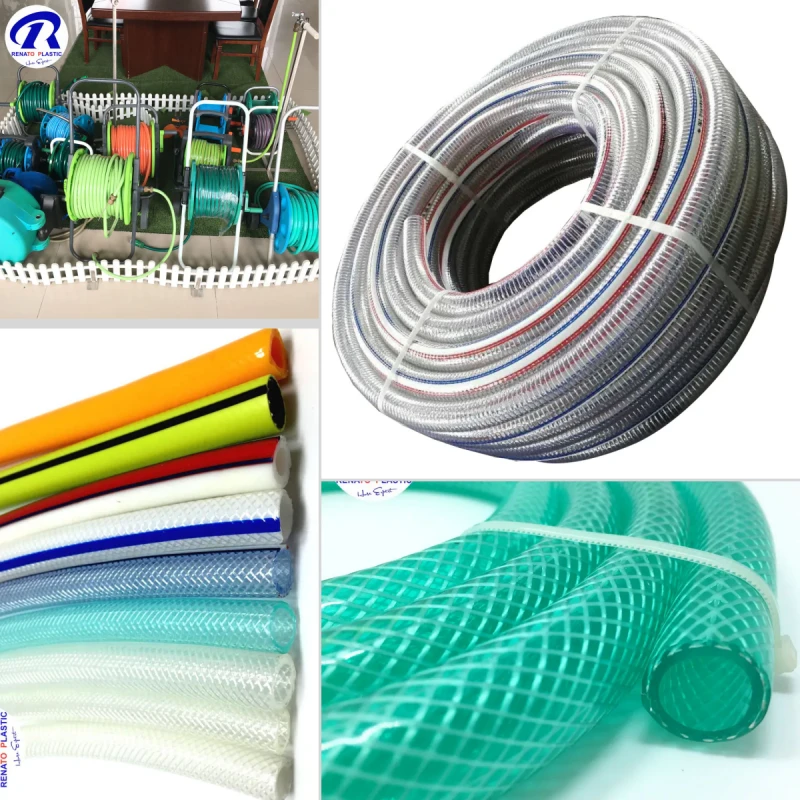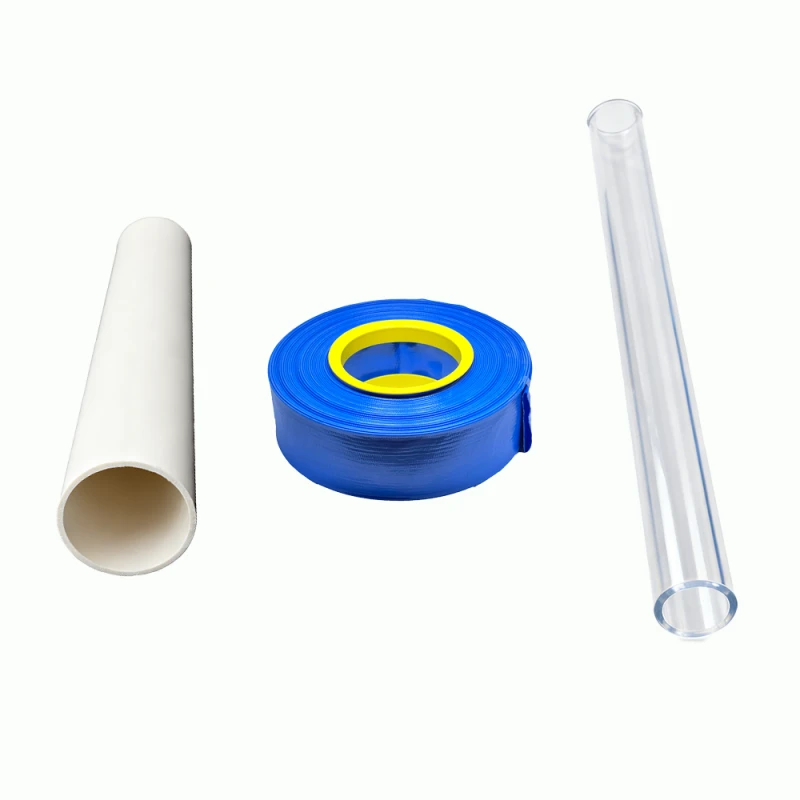Lay Flat Discharge Hose Pros and Cons: What You Need to Know Before Buying
Explore the pros and cons of lay flat discharge hoses. Learn the most popular sizes, materials, and best uses for irrigation, construction, and industrial water transfer.
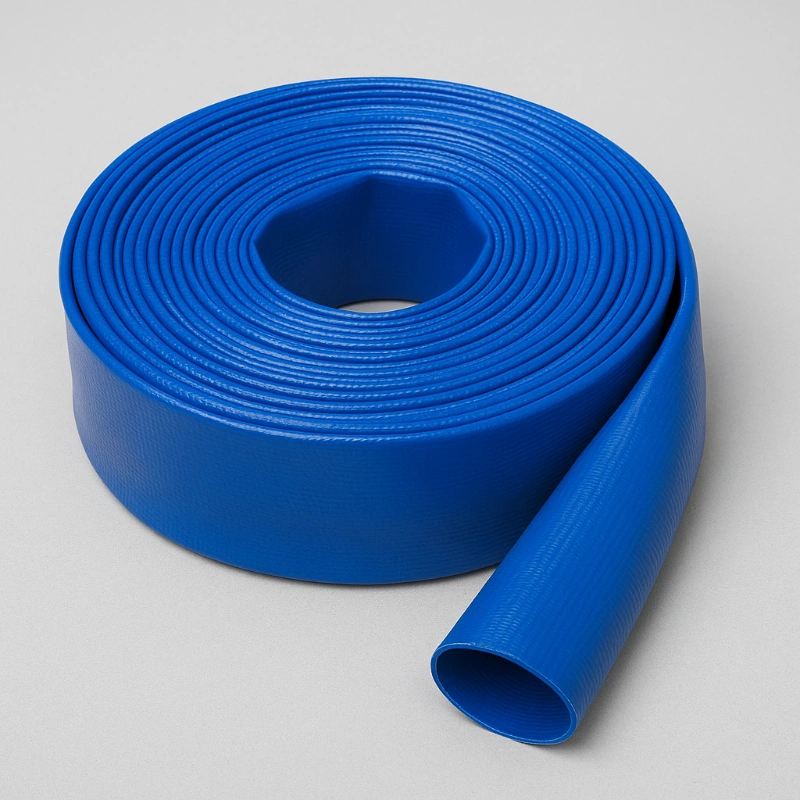
If you work in construction, agriculture, or any industry that deals with moving water or other fluids, chances are you’ve come across a lay flat discharge hose. It’s one of those simple yet super useful tools that make pumping, irrigation, and dewatering jobs a whole lot easier.
But is a lay flat discharge hose really the best choice for every situation? In this post, we’ll break down the pros and cons, talk about the most popular hose sizes, and share some pro tips on how to choose the right one for your project.
What Is a Lay Flat Discharge Hose?
Before diving into the pros and cons, let’s cover the basics. A lay flat discharge hose is a flexible hose designed to move liquids like water, slurry, or light chemicals. Unlike rigid pipes, it flattens out completely when not in use—making it lightweight, compact, and easy to store.
These hoses are typically made of PVC, rubber, or TPU (thermoplastic polyurethane) and reinforced with polyester yarn or synthetic fibers for strength. You’ll see them used in agriculture irrigation, construction sites, flood drainage, and firefighting applications. For example, this specific product:2, 3, 4, 5, 6 inch PVC lay flat discharge hose manufacturer, here is a detailed introduction to help you understand PVC lay flat discharge hose.
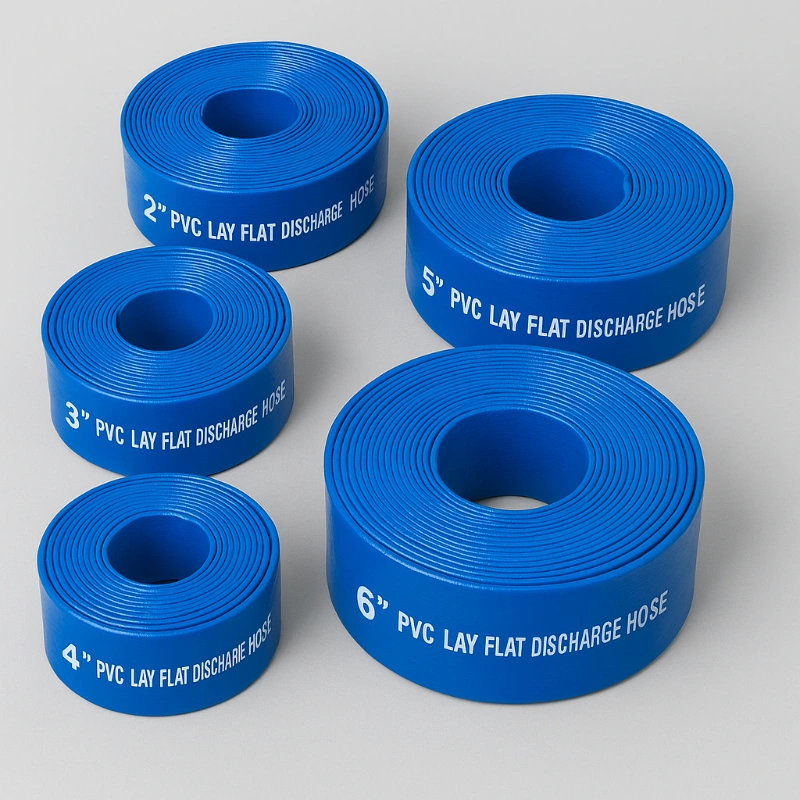
The Pros of Lay Flat Discharge Hoses
There’s a reason the lay flat discharge hose has become a go-to for contractors and farmers worldwide. Here are the biggest advantages:
1. Lightweight and Easy to Handle
One of the biggest perks is how easy it is to work with. Compared to rubber or metal hoses, lay flat hoses weigh much less. That means less back-breaking lifting and faster setup times—especially if you’re covering long distances in the field or on-site.
2. Space-Saving Storage
When the pump is off and the water’s gone, the hose flattens down completely. You can coil it up like a garden hose and toss it in a small storage area or truck bed. For operations that move from one job site to another, this feature is a total win.
3. Cost-Effective
If you’re watching your budget, a PVC lay flat discharge hose offers incredible value. It’s much cheaper than heavy-duty rubber hoses but still delivers good durability and flexibility. It’s a great entry-level choice for irrigation and general water transfer.
4. Flexible Yet Durable
Don’t let its light weight fool you. The internal reinforcement layer gives it enough strength to handle high water pressure without bursting. Premium TPU hoses can even handle oil, chemicals, or hot water, making them tough enough for industrial jobs.
5. Quick Deployment and Retrieval
Lay flat hoses are perfect for emergency setups—like flood drainage or firefighting—because you can roll them out fast and reel them back in just as easily. Time is money, and this type of hose saves plenty of both.
6. Resistant to Weather and Chemicals
A high-quality lay flat discharge hose stands up well to UV rays, ozone, and many types of mild chemicals. That makes it reliable for outdoor use over long periods, whether in blazing summer heat or cold, wet conditions.
The Cons of Lay Flat Discharge Hoses
Of course, no product is perfect. While lay flat discharge hoses are super convenient, they do come with a few trade-offs:
1. Not Ideal for Suction
These hoses are made for discharge, not suction. Since they collapse when not pressurized, they can’t draw water upward from a tank or pit. If you need suction, go for a PVC spiral or rubber suction hose instead.
2. Limited Abrasion Resistance
If the hose is dragged across rough ground or sharp stones, it can wear out or tear over time—especially cheaper PVC versions. Using hose reels or protective sleeves can help reduce this risk.
3. Lower Pressure Capability (for PVC types)
PVC lay flat hoses are great for light- to medium-pressure jobs (2–8 bar), but if you need to move high-pressure water, you’ll want a rubber or TPU lay flat discharge hose, which can handle 10–20 bar easily.
4. Can Kink or Twist
If not laid out properly, the hose can kink, reducing water flow. Always unroll it completely before use and avoid bending it sharply near the fittings.
5. Shorter Lifespan in Harsh Environments
In hot, chemical-heavy, or abrasive environments, a basic PVC lay flat hose won’t last as long as rubber or TPU types. Spending a bit more upfront for better material can save you replacement costs later.
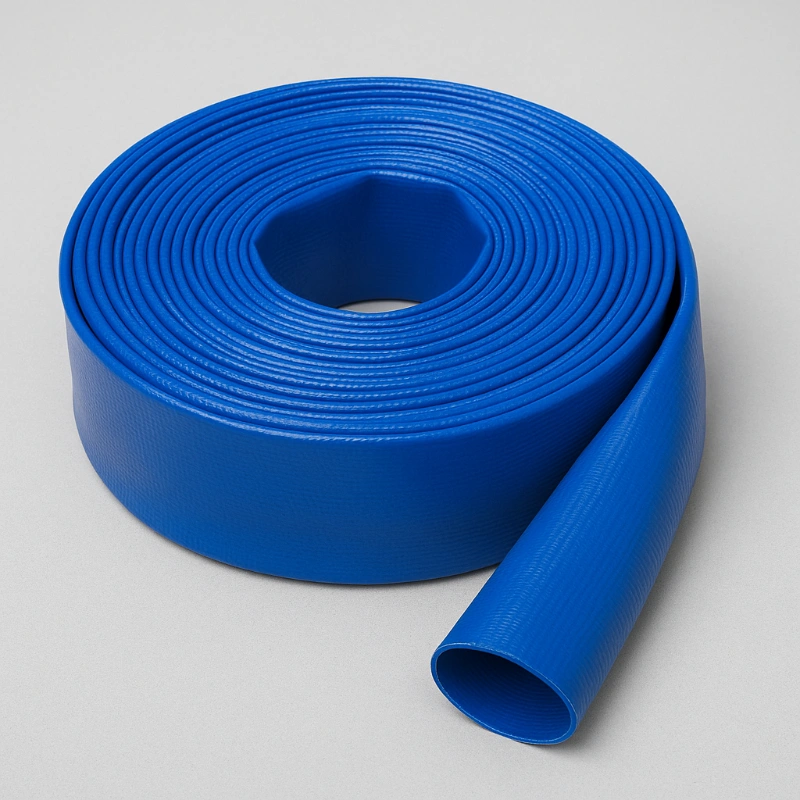
Most Popular Lay Flat Hose Sizes
Lay flat hoses come in many sizes, but some are far more common than others. Here are the most popular sizes used across different industries in the U.S. and worldwide:
| Hose Size (Inch) | Inner Diameter (mm) | Typical Working Pressure (PSI) | Common Applications |
|---|---|---|---|
| 2 inch (50 mm) | 50 mm | 75 PSI | Small pumps, irrigation systems |
| 3 inch (76 mm) | 76 mm | 90 PSI | Construction dewatering, water transfer |
| 4 inch (102 mm) | 102 mm | 90 PSI | Flood control, sprinkler systems |
| 6 inch (152 mm) | 152 mm | 120 PSI | Municipal drainage, mining operations |
| 8 inch (203 mm) | 203 mm | 120 PSI | Industrial discharge, oilfield sites |
The 2-inch Lay Flat Discharge Hose and 3-inch hoses are the best-sellers for general farm and construction use.
If you’re dealing with high-volume water transfer, go with 4-inch or 6-inch hoses for more flow and less friction loss.If you want to know more about PVC Lay Flat Discharge Hose, you can click on the following article: 1-1/4, 1/2, 2, 3, 4, 5, 6 inch lay flat discharge hose price from hose manufacturer.
PVC vs. Rubber vs. TPU Lay Flat Discharge Hose
When choosing a lay flat discharge hose, the material makes all the difference. Here’s a quick breakdown:
| Material | Advantages | Disadvantages |
|---|---|---|
| PVC | Cheap, lightweight, flexible | Less durable, lower pressure rating |
| Rubber | Tough, high-pressure capable | Heavier, more expensive |
| TPU | Superior strength, abrasion & oil resistant | Premium price, less common |
If you just need something for farm irrigation or construction water discharge, PVC works perfectly. But if you’re in industrial, oilfield, or mining applications, TPU or rubber hoses are worth the investment.
Pro Tips for Buyers
Match the size to your pump outlet. Using a 3-inch pump with a 2-inch hose will choke your flow rate.
Check the working pressure. Always choose a hose rated higher than your system pressure for safety.
Buy a little extra length. It’s better to have a few extra feet than come up short on site.
Use quality fittings and clamps. Cheap metal clamps can rust and cause leaks.
Store properly. Drain water, roll it up, and keep it out of direct sunlight to extend its life.
Price Overview (Factory Direct Estimate)
Prices vary depending on material and size, but here’s a ballpark for standard hoses (EXW China):
| Size | Material | Approx. Price (USD/m) |
|---|---|---|
| 2 inch | PVC | $0.60–$0.90 |
| 3 inch | PVC | $1.00–$1.40 |
| 4 inch | PVC | $1.50–$2.20 |
| 6 inch | PVC | $3.00–$4.50 |
| 6 inch | TPU | $5.00–$8.00 |
For large orders or OEM printing (your logo on the hose), suppliers usually offer better pricing and packaging customization.
Final Thoughts
When it comes to water discharge, lay flat discharge hoses are hard to beat. They’re flexible, affordable, and easy to handle—ideal for both farmers and contractors.
However, like any tool, they have limits. If your work involves high pressure, rough terrain, or abrasive materials, you might want to step up to a rubber or TPU model for longer life.
The key is to choose the right size and material for your job. For most buyers, 2-inch, 3-inch, and 4-inch lay flat discharge hoses strike the perfect balance between performance and price.
So, next time you’re setting up your pump system, you’ll know exactly what to grab—and why a lay flat discharge hose might just be the smartest piece of gear in your toolbox.
